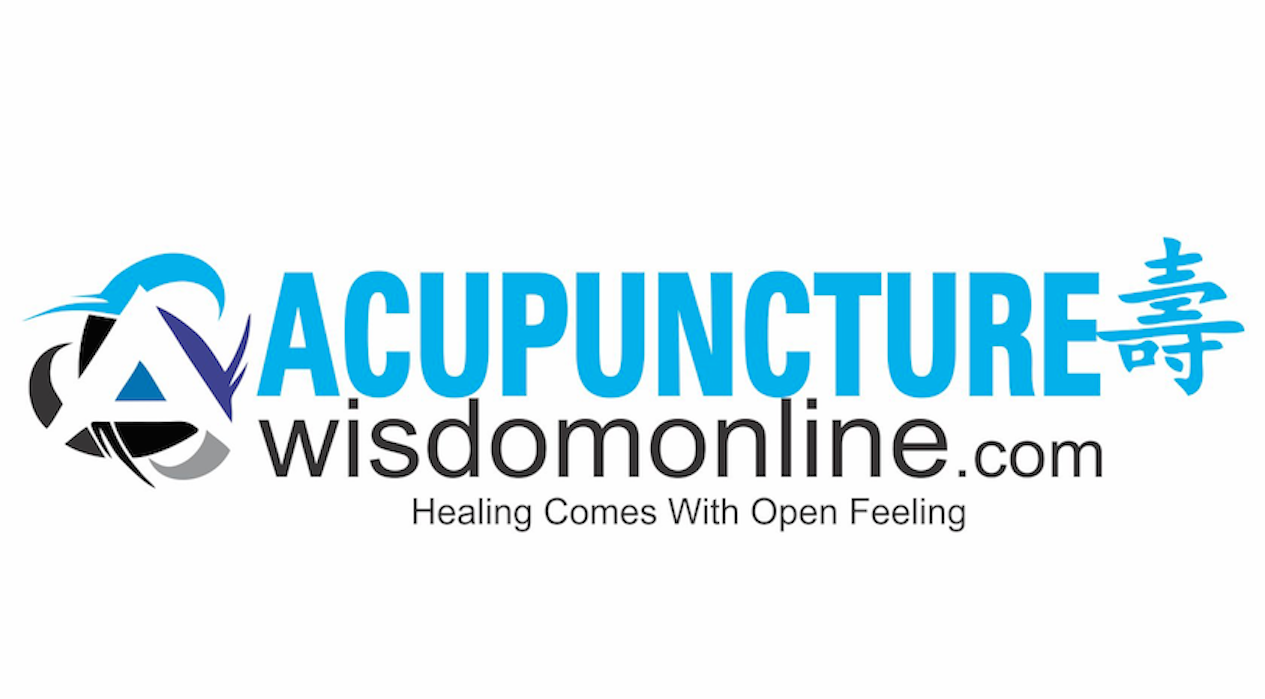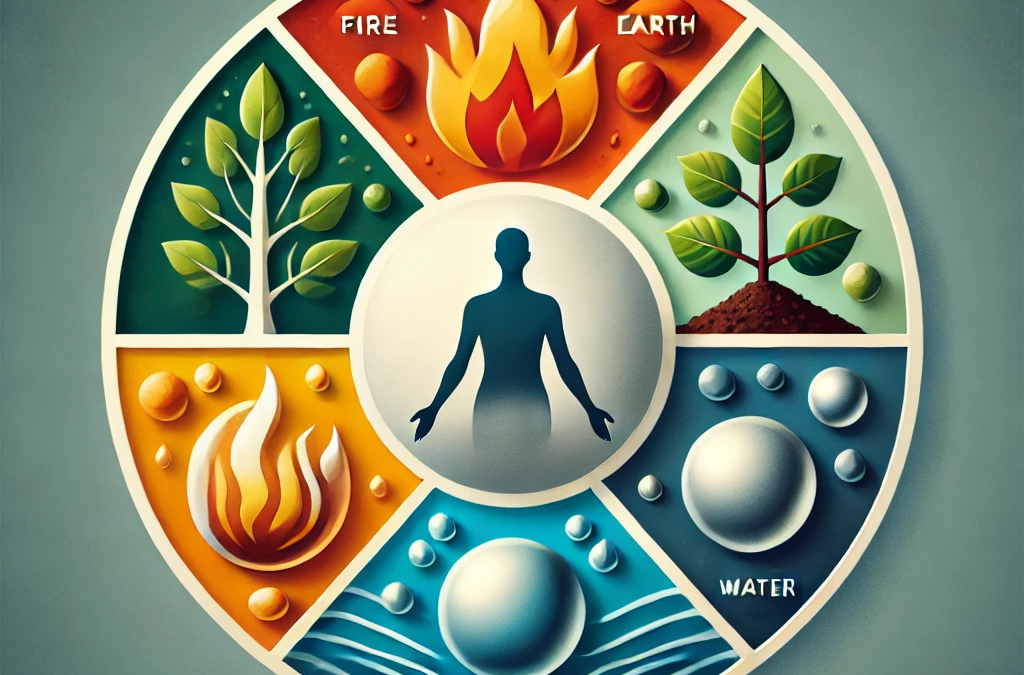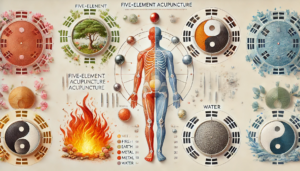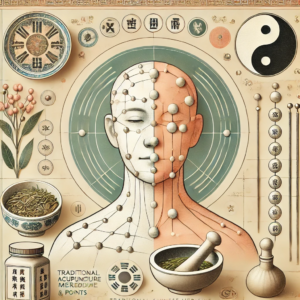Five-Element Acupuncture vs. Traditional Chinese Medicine: Understanding the Differences
When seeking acupuncture and holistic healing, you may come across two approaches:Five-Element Acupuncture vs TCM highlights two distinct approaches to wellness, each rooted in ancient Chinese medicine and focused on restoring balance.
They differ significantly in their focus, philosophy, and application. In this article, we’ll explore the key differences between Five-Element Acupuncture and TCM, helping you understand which approach may be right for your wellness journey.
1. Philosophical Foundations: Five-Element Acupuncture vs TCM Understanding the Differences.
Five-Element Acupuncture vs TCM addresses both emotional and physical health.
When comparing Five-Element Acupuncture to Traditional Chinese Medicine, their differences become clear.
Five-Element Acupuncture vs TCM: Understanding the Differences
Five-Element Acupuncture
• Five-Element Acupuncture is based on the Five Elements: Wood, Fire, Earth, Metal, and Water. These elements correspond to different aspects of the human experience, including physical organs, emotions, seasons, and environmental influences.
• It places a strong emphasis on the balance of emotions and spirit, recognizing that emotional and spiritual well-being are as important as physical health.
• The philosophy sees each person as being dominated by one primary constitutional element, which shapes their physical and emotional tendencies.
Traditional Chinese Medicine (TCM)
• TCM encompasses a broader framework, focusing on the yin-yang balance and the flow of Qi (energy) through the body’s meridians.
• TCM views health as the result of harmonious Qi flow and addresses physical symptoms and imbalances by restoring this flow.
• It integrates various modalities, such as acupuncture, herbal medicine, cupping, and dietary therapy, as part of a holistic treatment approach.
2. Focus of Diagnosis
How Five-Element Acupuncture and TCM Approach Wellness Differently
Five-Element Acupuncture
• Diagnosis in Five-Element Acupuncture centers on a person’s constitutional element and how it influences their physical, emotional, and spiritual health.
• Practitioners pay close attention to subtle cues, such as the patient’s color, voice tone, odor, and emotional state. These clues reveal imbalances within the Five Elements.
• Emotional and spiritual blockages are considered primary causes of illness.
Traditional Chinese Medicine (TCM)
• Diagnosis in TCM focuses on the pattern of disharmony in the body, identified through tools like pulse and tongue diagnosis.
• TCM practitioners assess physical symptoms, environmental factors, and lifestyle habits to determine imbalances in Qi, yin-yang, and the organ systems.
• Treatment is more symptom-focused, aiming to relieve physical discomfort and restore balance.
3. Treatment Goals
Five-Element Acupuncture
• The goal is to restore harmony within the Five Elements, enabling the person to achieve balance on physical, emotional, and spiritual levels.
• Treatments address deeper root causes of illness, often tied to unresolved emotions or life events.
• It’s highly personalized, with each session tailored to the individual’s elemental constitution.
Traditional Chinese Medicine (TCM)
• TCM aims to treat specific symptoms and restore the smooth flow of Qi throughout the body.
• Treatments often involve multiple modalities, such as herbal prescriptions, acupuncture, and lifestyle recommendations, to address various aspects of health simultaneously.
• It focuses more on the physical manifestations of imbalance rather than emotional or spiritual causes.
4. Approach to Emotional Health
Five-Element Acupuncture vs TCM: What Sets Them Apart
Five-Element Acupuncture
• Emotional health is at the core of Five-Element Acupuncture. Practitioners believe that emotions like anger, joy, worry, sadness, and fear are deeply tied to the elements.
• For example, anger relates to Wood, while fear relates to Water. If these emotions are excessive or repressed, they disrupt the body’s balance.
• Treatments often aim to help patients release emotional blockages, offering profound emotional and spiritual healing.
Traditional Chinese Medicine (TCM)
• While TCM acknowledges the role of emotions in health, it does not focus on emotional healing as deeply as Five-Element Acupuncture.
• Emotional imbalances are addressed as part of the overall pattern of disharmony but are secondary to physical symptoms in most cases.
5. Session Experience
Five-Element Acupuncture
• Sessions are often introspective and involve detailed discussions about the patient’s emotional and spiritual state.
• Treatments may feel more personalized and reflective, focusing on long-term healing rather than immediate relief.
• Fewer needles are used, and they are carefully placed based on the patient’s elemental imbalances.
Traditional Chinese Medicine (TCM)
• TCM sessions are often more structured and practical, with a focus on treating specific symptoms or conditions.
• Practitioners use a variety of tools, including acupuncture, herbal formulas, and dietary recommendations.
• Needle placement typically follows the meridian system, aiming to restore Qi flow across affected areas.
Which Approach Is Right for You?
The choice between Five-Element Acupuncture and TCM depends on your personal goals and preferences:
• Choose Five-Element Acupuncture if you’re seeking emotional and spiritual healing alongside physical wellness. This approach is ideal for individuals who value personalized care and a focus on the deeper root causes of imbalance.
• Choose Traditional Chinese Medicine (TCM) if you’re looking to address specific symptoms or conditions with a broad, practical approach to restoring balance and Qi flow.
Both Five-Element Acupuncture and TCM have unique strengths and offer profound healing. By understanding the differences, you can select the approach that aligns best with your needs.
Conclusion
While Five-Element Acupuncture and Traditional Chinese Medicine share a common foundation in ancient Chinese healing practices, their philosophies and methods set them apart. Five-Element Acupuncture emphasizes emotional and spiritual balance, while TCM focuses on physical symptoms and restoring Qi flow. Both are powerful modalities for achieving health and well-being, and the right choice depends on your individual journey.
If you’re curious to learn more or experience the benefits of Five-Element Acupuncture firsthand. Click this link: Don’t hesitate to reach out.
Dr. Robin Tim So in clinical practice since 1980 with over 44 years of expertise in Five-Element Acupuncture, offering a deeply personalised and holistic approach to wellness. As a long-standing Fellow member of the Australian Acupuncture and Chinese Medicine Association (Member #49), Robin is committed to balancing the physical, emotional, and spiritual aspects of health through the ancient principles of the five elements—Wood, Fire, Earth, Metal, and Water. His extensive experience and dedication to patient care make him a trusted practitioner for those seeking profound healing and balance.
©2024 RobinTimSo








I was reading through some of your blog posts on this site and I believe this website is really instructive! Keep on putting up.
thank you